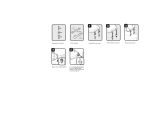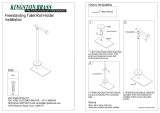
MTD Engine - Series 350/450/650
3
3. MAJOR FAILURES NOT COVERED UNDER
WARRANTY
NOTE: The following is a list of typical non war-
rantable scenarios. It is meant to provide illus-
tration of the intended principles of the warranty.
Non-warrantable repairs include, but are no lim-
ited to the items on this list.
3.1. Ingestion of dirt through the intake (air filter/car-
buretor)
3.2. Lubrication failure
3.3. Bent crankshaft
3.4. Overheated by obstructed cooling system
3.5. Corrosion or water damage
3.6. Second year carburetor failures.
4. MINOR FAILURES NOT COVERED UNDER
WARRANTY
NOTE: The following is a list of typical non war-
rantable scenarios. It is meant to provide illus-
tration of the intended principles of the warranty.
Non warrantable repairs include, but are no lim-
ited to the items in this section.
4.1. Sheared flywheel key
4.2. Stale, out-of-date, or improper fuel
4.3. Damage from improper storage
4.4. Damage caused by animals / insects
4.5. Impact damage
4.6. Normal maintenance or adjustment items.
4.7. Recoil starter rope damage that is not the direct
result of a defect in materials or workmanship.
5. MAINTENANCE AND ADJUSTMENT INFOR-
MATION
5.1. Fasteners: All threaded fasteners used on the
engine are metric, with the following exceptions:
• A 13/16” or 21mm wrench are suitable for spark
plug removal.
• Series 350 and Series 450 engines are secured
to mower decks using a 3/8” self-tapping screw.
Remove them using a 9/16” wrench.
• Series 650 engines are secured to the mower
decks using metric nuts and bolts. Remove
them using a pair of 14mm wrenches.
• The crankshafts of all engines in this manual are
tapped with a 1/2”-20 thread, and the bolts can
be removed using a 5/8” wrench.
5.2. Spark plug: Torch model F7RTC, gapped to
.024”-.032” (.60-.80 mm).
• Champion RN14YC or NGK BPR4ES are physi-
cally similar but may not match the F7RTC in
heat range. This difference in heat ranges will
effect performance and emissions. It is recom-
mended that the Torch F7RTC plug be used for
service.
• Wear rate will vary somewhat with severity of
use. If the edges of the center electrode are
rounded-off, or any other apparent wear / dam-
age occurs, replace the spark plug before oper-
ating failure (no start) occurs.
5.3. Cleaning the spark plug:
• Use of a wire brush may leave metal deposits on
the insulator that cause the spark plug to short-
out and fail to spark.
• Use of abrasive blast for cleaning may leave
blast media in recesses in the spark plug. When
the media comes loose during engine operation,
severe and non-warrantable engine damage
may result.
• Abrasive blast cleaning with organic media such
as walnut shells is acceptable.
5.4. Inspection of the spark plug can provide indica-
tions of the operating condition of the engine.
• Light tan colored deposits on insulator and elec-
trodes is normal.
• Dry, black deposits on the insulator and elec-
trodes indicate an over-rich fuel / air mixture (too
much fuel or not enough air)
www.mymowerparts.com
For Discount White Outdoor Parts Call 606-678-9623 or 606-561-4983





















